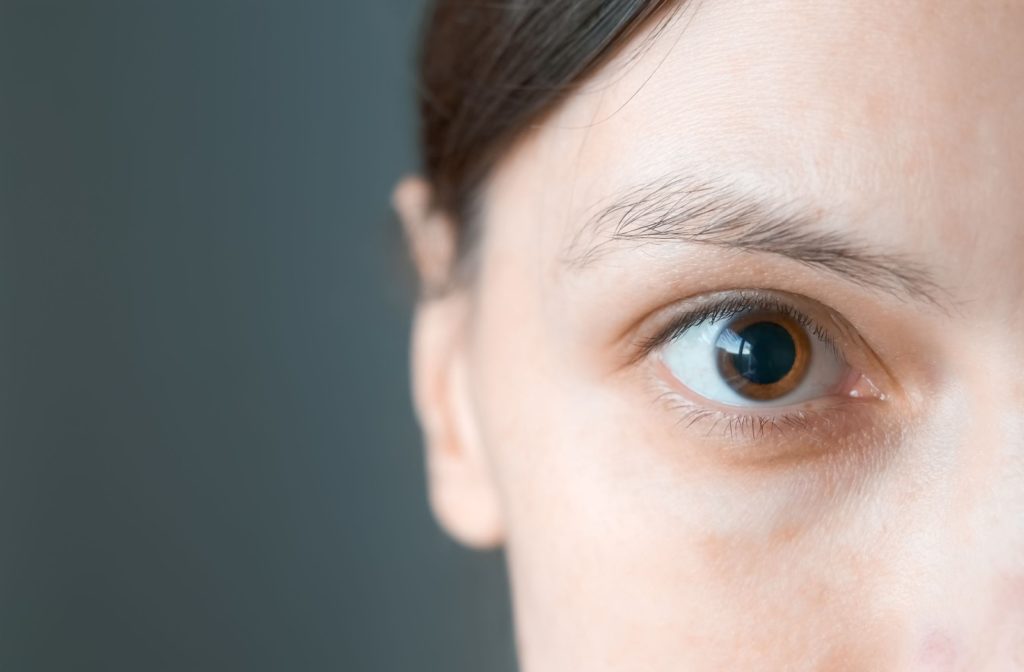Many people are caught off guard by the effects of dilation, which can temporarily impact vision. If you’re heading to an eye appointment you might not be sure whether you’ll be fine to drive after.
Driving with dilated eyes can be tricky because the drops used during an eye exam often cause blurry vision and increased light sensitivity. While some people feel confident driving after dilation, it’s not always the safest choice.
Things like how your eyes react, the time of day, and the length of your drive all play a role in whether you should get behind the wheel or arrange for a ride instead.
What Happens When Your Eyes Are Dilated?
Eye dilation is an important step in a comprehensive eye exam. Your eye doctor uses special eye drops to open (or dilate) your pupils, giving them a better view of the back of your eyes.
This allows them to diagnose conditions like retinal diseases, glaucoma, or macular degeneration that may not be visible with undilated pupils.
Effects of Dilation on Vision
Blurry Vision & Light Sensitivity
The dilation process can make your vision blurry for several hours after your exam. This happens because your eyes are temporarily less capable of focusing. Additionally, your pupils remain wide open, making your eyes highly sensitive to bright light or glare.
Impact on Depth Perception and Focus
Your ability to judge distances and depth accurately may also be affected. These changes can make it more challenging to perform precise tasks, including driving. Reading road signs, spotting pedestrians, or navigating intersections clearly might be more challenging than usual.
Can You Drive After Dilation?
The truth is, some people feel comfortable driving right after their exam, but it’s safest to wait. Here’s what to keep in mind:
Severity of Dilation Effects
Different people react differently to dilation drops. While some may experience mild vision changes, others may have a more noticeable impairment that makes driving unsafe.
Comfort Level Behind the Wheel
If you know that blurry vision or light sensitivity makes you uncomfortable, it’s better to avoid driving. Feeling unsure could make you more nervous on the road, increasing the likelihood of mistakes.
Tips for Driving Safely After an Eye Exam
If you do decide to drive after dilation, here are some ways to make it safer:
Use Sunglasses to Reduce Glare
Carry a pair of sunglasses to protect your eyes from bright sunlight. Polarized sunglasses are especially effective at reducing glare, helping you see more clearly.
Drive Short Distances Only if Necessary
If you must drive, limit your trip to short, familiar routes. Avoid highways or complex traffic situations, as they can be overwhelming when your vision is impaired.
Adjust Your Schedule
Try scheduling your eye exam during a time when driving in low light will reduce glare, like early morning or evening hours.

Alternatives to Driving After Dilation
If you’re feeling unsure about driving, these alternatives can be great options:
Rideshare & Public Transport Options
Services like Uber, Lyft, or local taxis are convenient alternatives that are readily available in most cities. Public transportation can also be an excellent way to get home safely.
Asking a Friend or Family Member for a Ride
Bringing a friend or family member along is one of the easiest ways to avoid driving. Not only is it safer, but it can also be comforting to have someone with you post-exam.
How Long Do Dilation Effects Last?
Duration of Vision Impairment
The effects of dilation drops usually last anywhere from 4—6 hours. However, for some people, they can linger up to 24 hours, particularly those with lighter-colored eyes.
Recovery Time
Age and the type of drops used can influence how quickly your vision returns to normal. It’s best to ask your eye doctor how long you should expect the effects to last after your exam.
When to Avoid Driving Completely
Recognizing Unsafe Visual Conditions
If your vision feels significantly blurry or if you’re struggling to adjust to light, driving should be avoided. These impairments could make even short trips dangerous.
If you’re unsure whether you’re ready to drive, give yourself extra time to rest. Sit in a shaded, calm area and test your visual clarity before deciding whether to get behind the wheel.
Preparing for Your Dilated Eye Exam
Planning ahead can make the process go much more smoothly. Here’s what you can do:
- Plan transportation in advance: If you’ve experienced issues with dilation effects before, arrange for someone else to drive you or plan to use a rideshare service.
- Bring sunglasses to minimize discomfort: Always have sunglasses with you. They can help reduce strain on your eyes and make the trip back home far more comfortable, whether you’re driving or not.
- Take time to relax: Avoid planning strenuous activities or detailed visual tasks after your exam. Resting your eyes will help them recover faster.
Make Safety Your Priority
Driving with dilated eyes is possible in some cases, but it requires careful judgment. For safety’s sake, it’s often better to err on the side of caution and avoid driving when your vision is compromised.
By planning ahead or opting for alternatives like rideshare services, you can ensure a smoother, safer experience after your eye exam. If you’re ready for your next eye exam or have any more questions, contact us at Total Vision Pleasanton.



